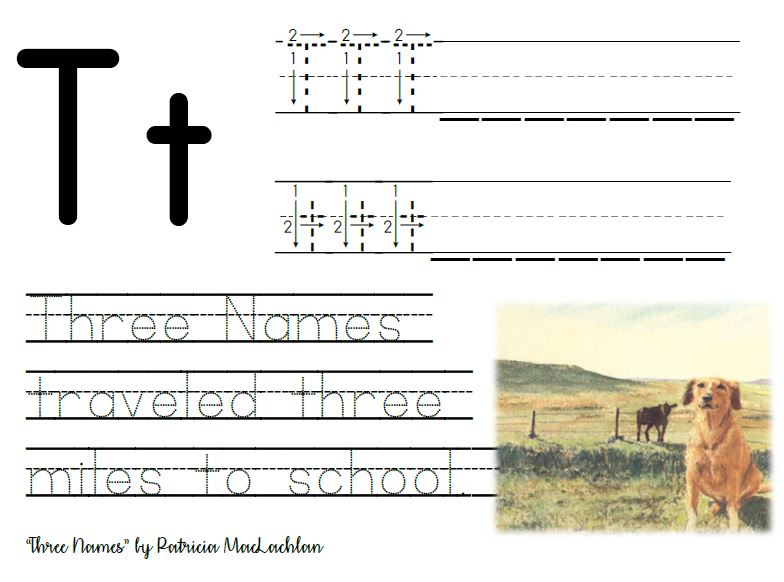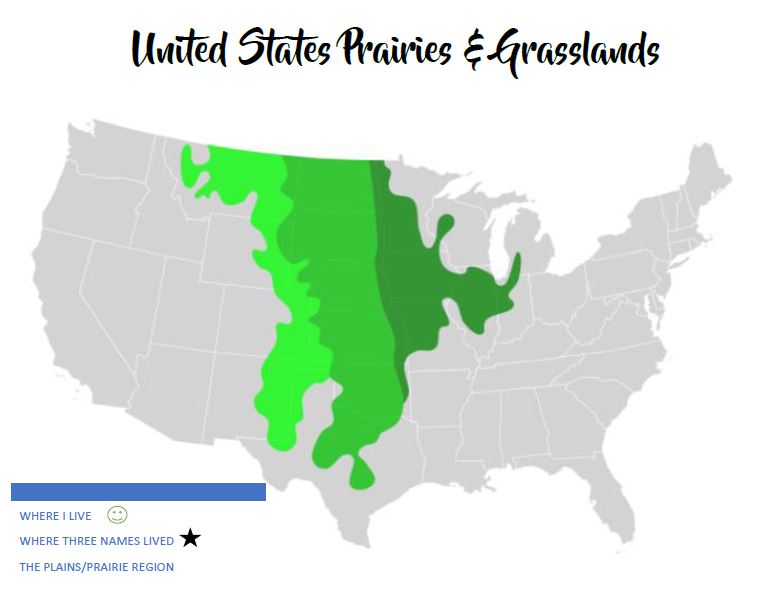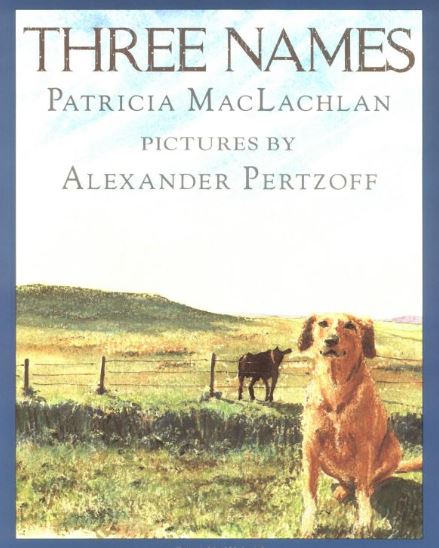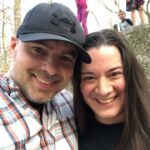T: Three Names
Things I Need:
- Three Names
- “T” Handwriting Sheet (printable version here)
- Prairies/Grasslands Worksheet (printable version here)
-
US Map (if you have one with the grasslands/prairie regions located, even better)
- Prairie Wagon Template
-
Beige Construction Paper
-
Wheat
-
Glue
-
Potatoes in a crockpot with butter
Review:
Q – goes with U, R says “r” for miss Rumphius, S says “ssss” and can sometimes say “shhh” etc (if you want to go back and review the names of the last few stories, this is a good way to refreshing their memories or a certain concepts
Introduce the letter T / Th
Today’s letter is T. And you guys know that T says “T” …
like in Turtle and Toothbrush and Tractor and ….
have a buddy. And when he has a buddy he says another sound. T sometimes
has a buddy H. TH can say Thu – like in
This, That, There, These. Those, etc.
like in think, thing, three.
it, but not our normal “t” sound that we think of, but another sound, “th”
Introduce the Book
Our story takes place today on the American Prairies, about 150-200 years ago.
Take a moment to go back to the early to mid 1800s. In 1776, America became a country. The new Americans settled up and down the east coast. But as time went on, Americans wanted to stretch out. Many people, called “Pioneers” or “Settlers” sold their homes and everything they had and packed as much as they could pack into a wagon. This image of a family, a wagon, and their belongings following along a flat prairies road became synonymous with the American Pioneer. (Though in reality much of the journey was on rocky, treacherous trails, through mud and rivers, over mountains. Many didn’t make it. Others made it, but tried to bring too much, and lost many of their belongings along the way.)
Discuss
A wagon could only hold about 1500 pounds, so you had to be very selective about what you brought with you. Many many precious possessions had to be left behind. Only the absolute necessities could be brought.Remember, when they found their new plot of land, what would they need to start fresh? Sometimes a few families would live together, But sometimes you may be far from anyone else.
Ask the class
What do you think they would you need for the journey?
What would you need to build your house from nothing?
(gun -for protection, hunting animals; sewing supplies and fabric for making their own clothing; tools – for gardening and building; food – grains, rice, dried meats and fruits, clean water, and seeds. Maybe one small toy, a small house hold appliance (like a butter churn or weaving machine – but these were heavy, and often had to be left behind. Maybe a single toy.)
Take another minute to discuss how they would have felt as a young pioneer leaving everything with their parents? How would you have felt? Sad to leave everyone behind? Scared? Excited for the new adventure? Excited to be with your family so much?
For more resources, a great overview of the pioneer days for kiddos can be found here.
Read the Story
This is a good book to interrupt often. Point out differences from the students own lifestyle now. Some good questions for further discussion throughout the book:
*How much harder do you think things were for them?
*What differences can they spot between life for these early settlers and their own lives? (more chores, more walking, going to school on a horse, different entertainment, etc)
*Any similarities? (still kids, still glad to be out of school, miss their friends, etc)
*Has anyone been in a tornado before?
Handwriting Sheet
 |
| Click here to print |
Prairies Worksheet
 |
| Click here to print |
Wagon Craft
Finish the class by enjoying warm, buttery potatoes together!
Fill a crockpot with quartered potatoes (one quarter per kid is fine for a taste taste, plus a few extras for teachers or hungry kids), a generous amount of butter (half-one stick, depending on how many kids), salt, and pepper. Cook on high for about 3 hours. For our 11 o’clock class, I started it at 8, drove to co-op, plugged it in at 9, and it was ready for our 11:30 class. I was surprised at how wonderful potatoes out of the crockpot were. The edges were crunchy, the inside was soft. The butter and salt and pepper all mixed together were wonderful. Plus, we got that “warm potato smell” that the book talks about seeping through our classroom so we could experience pioneer life a little more in our classroom.
Bring some plastic cups and forks for serving… almost everyone in the class enjoyed this pioneer school snack.
Click here to return to the Learning the ABC’s through Literature complete booklist and see the general instructions for each lesson.




